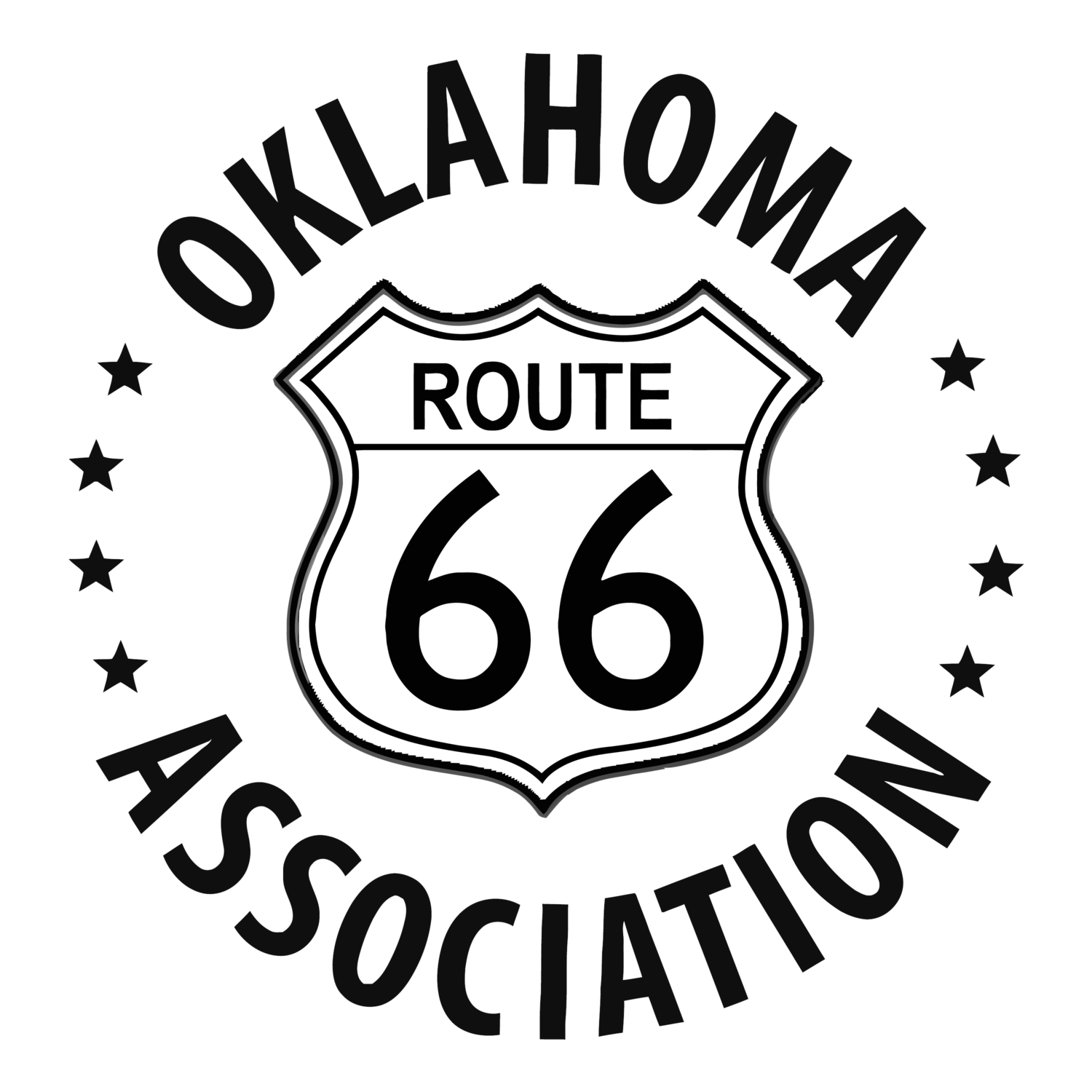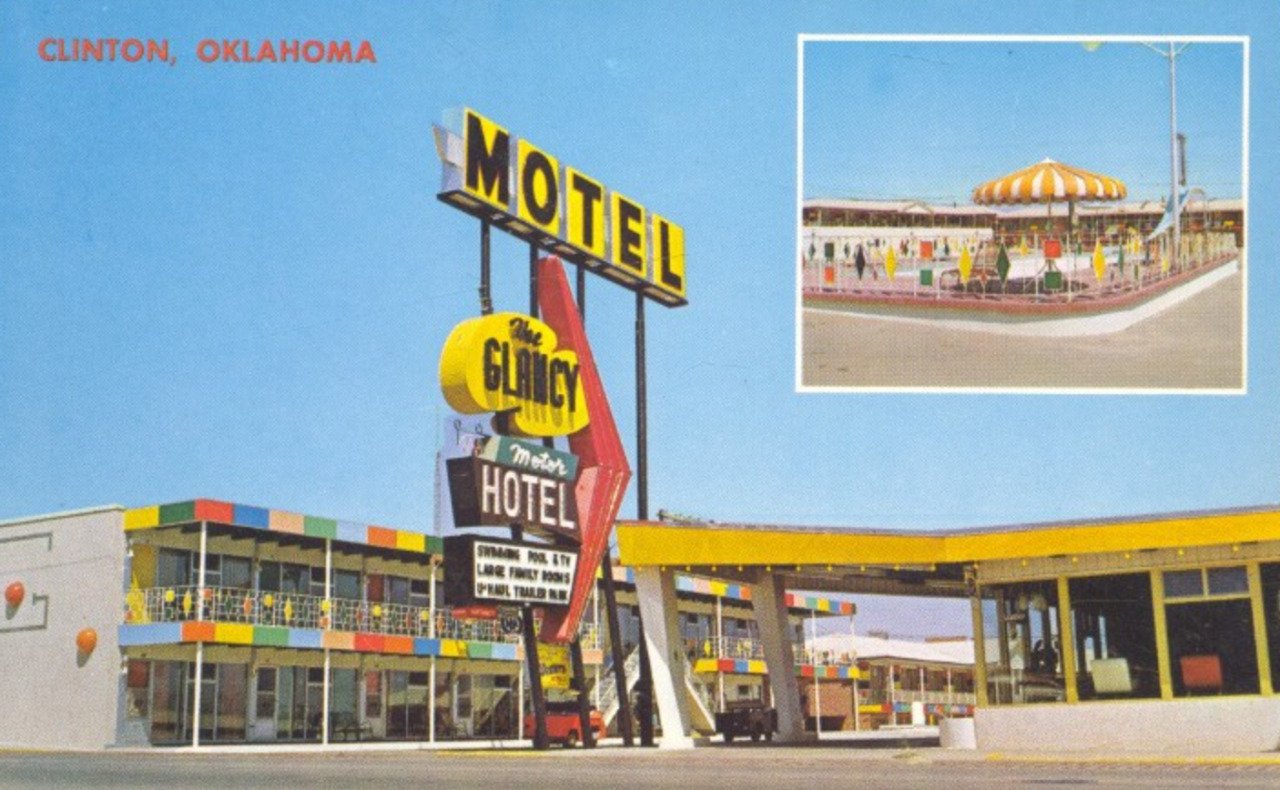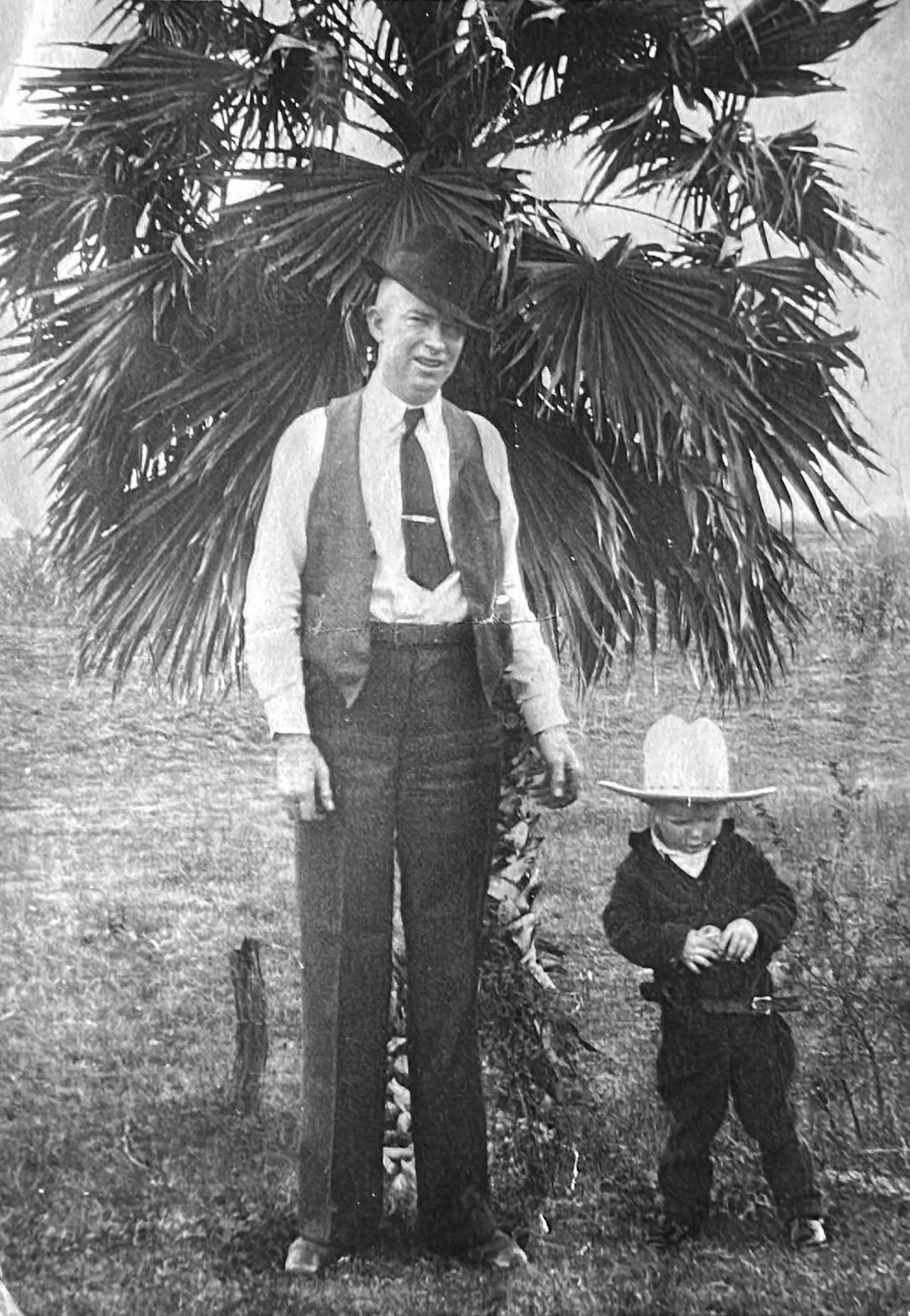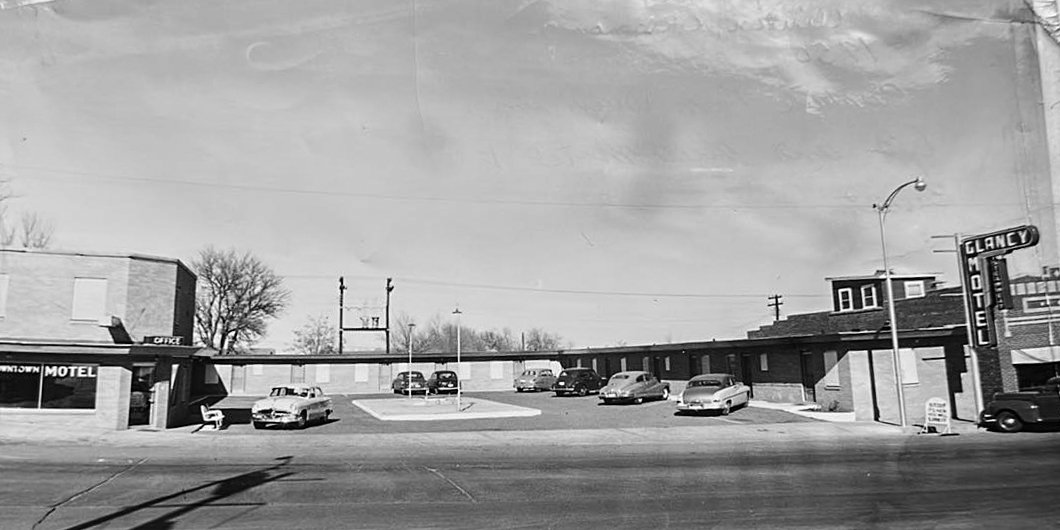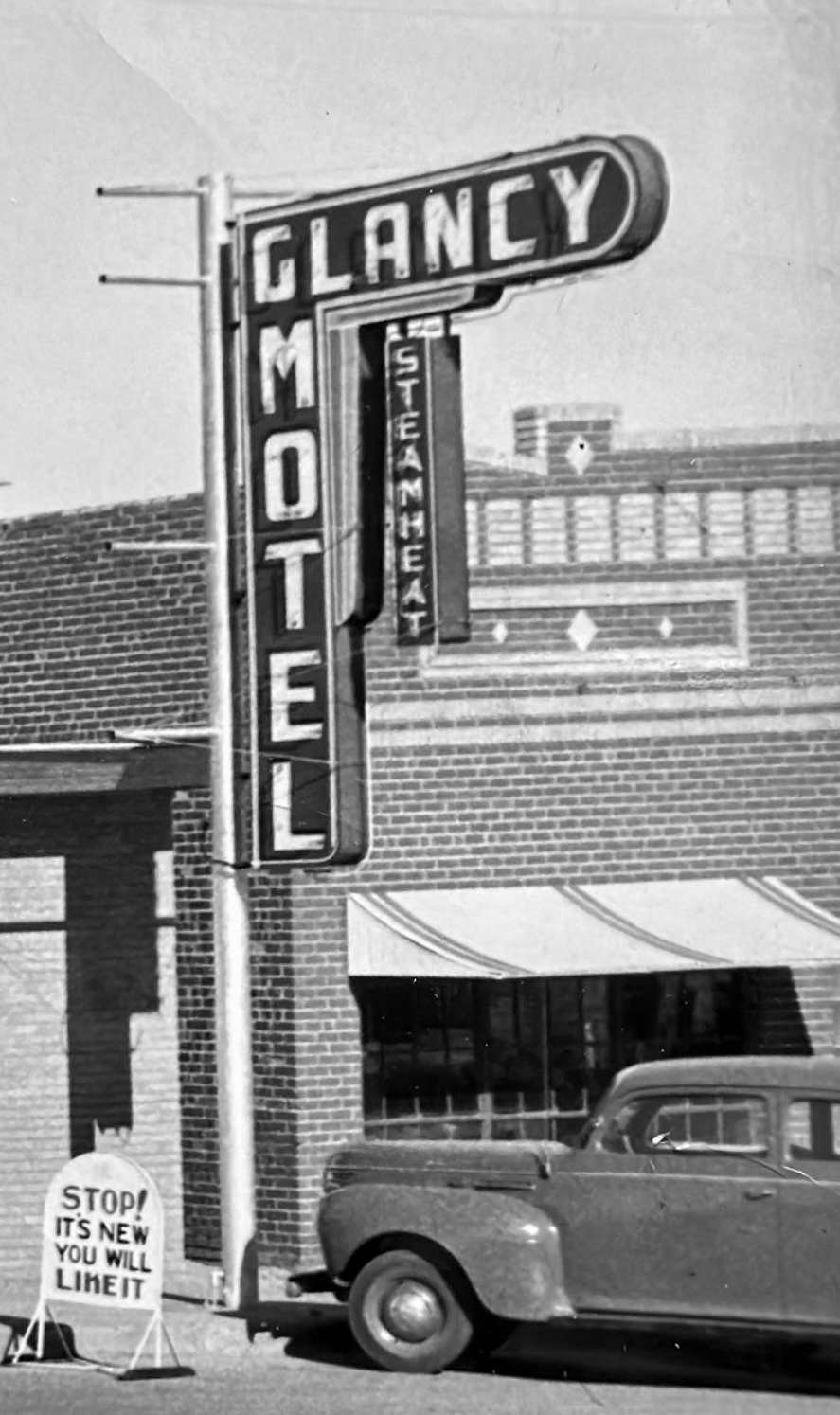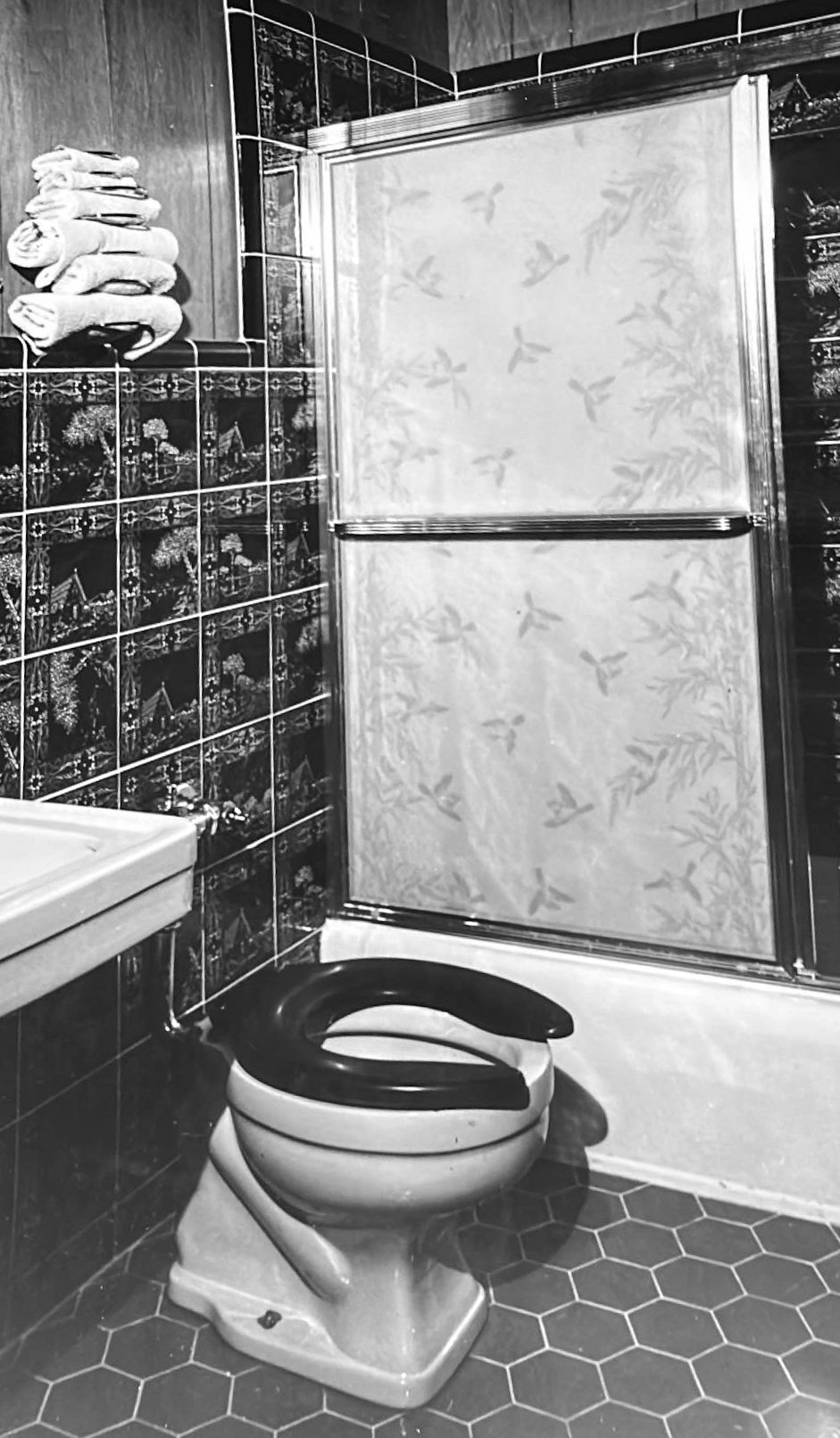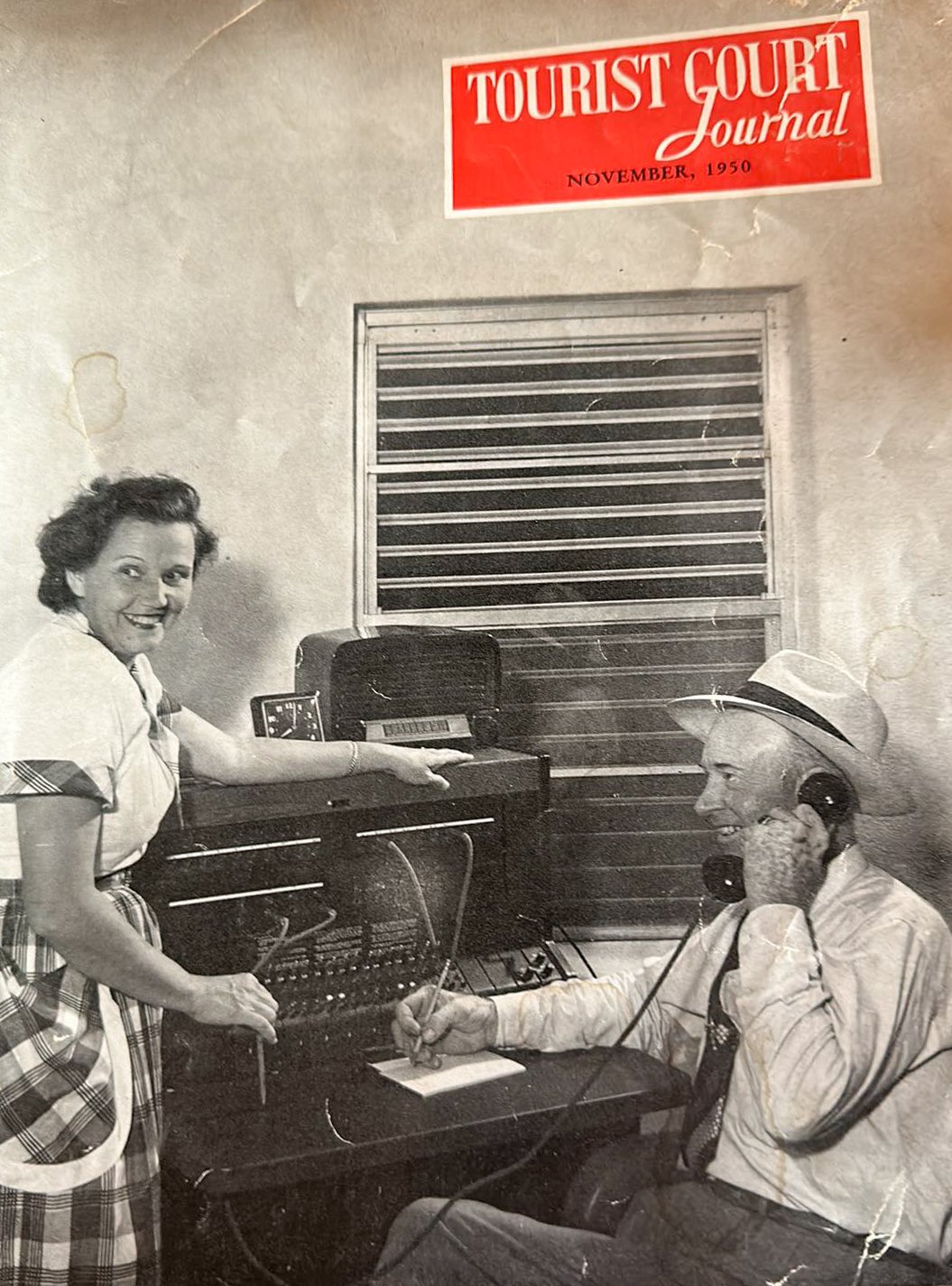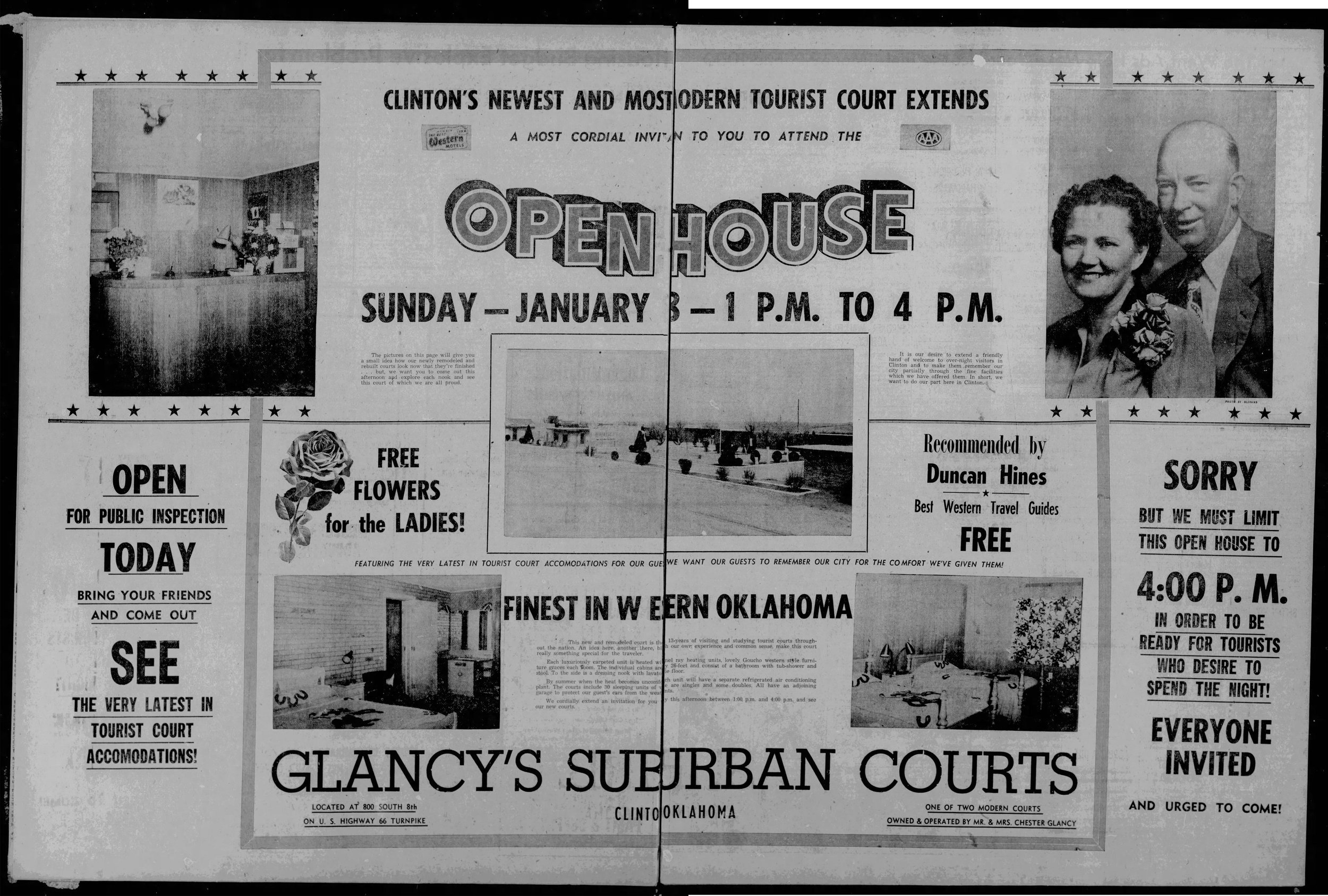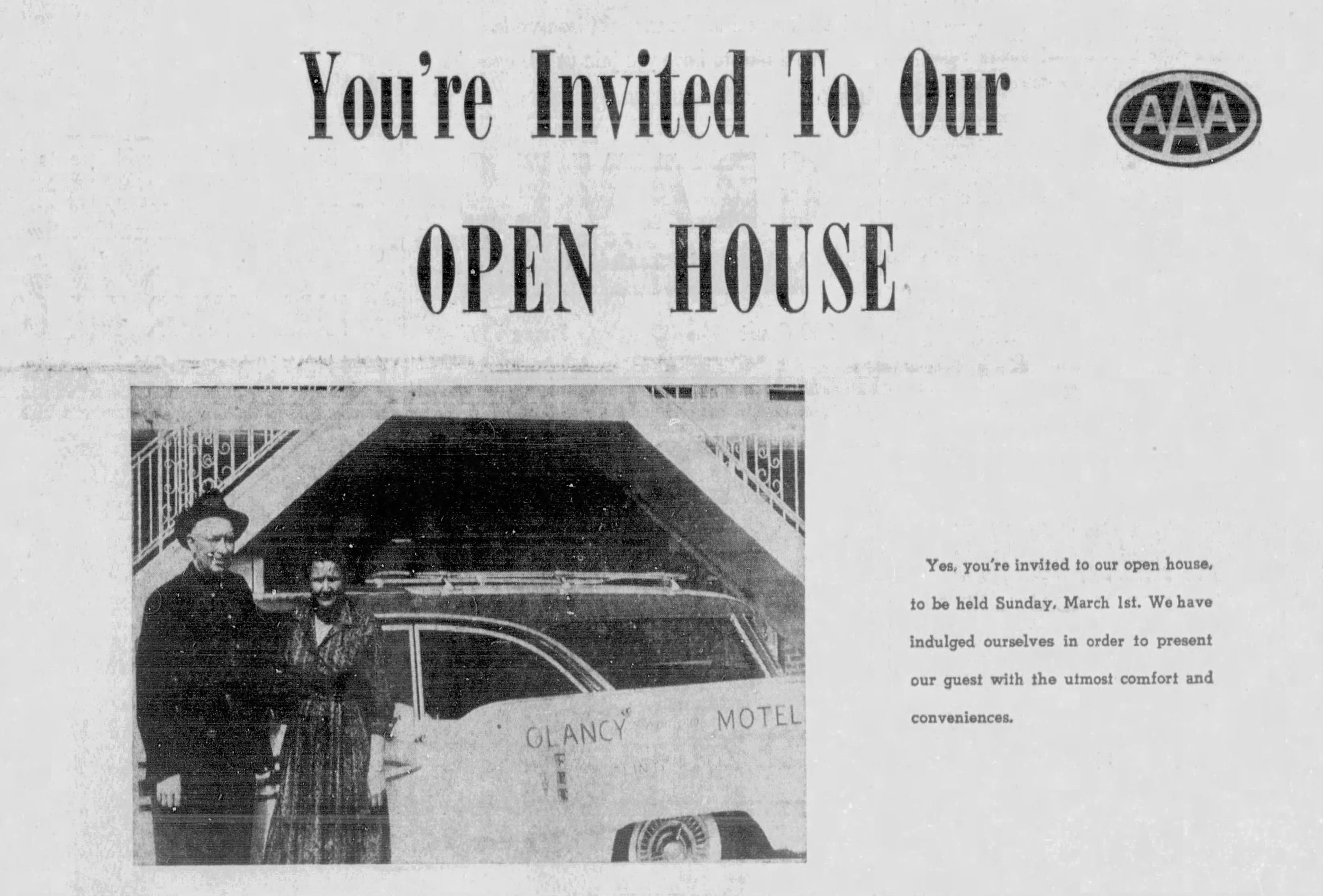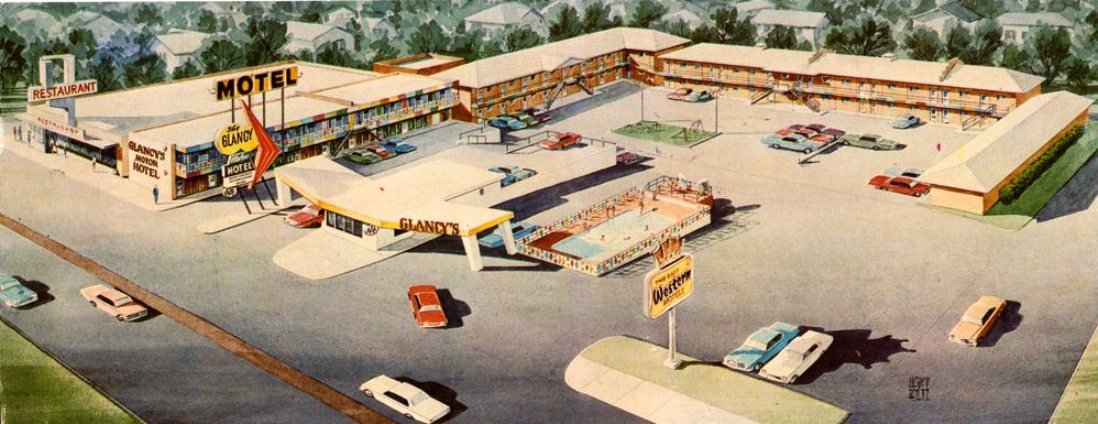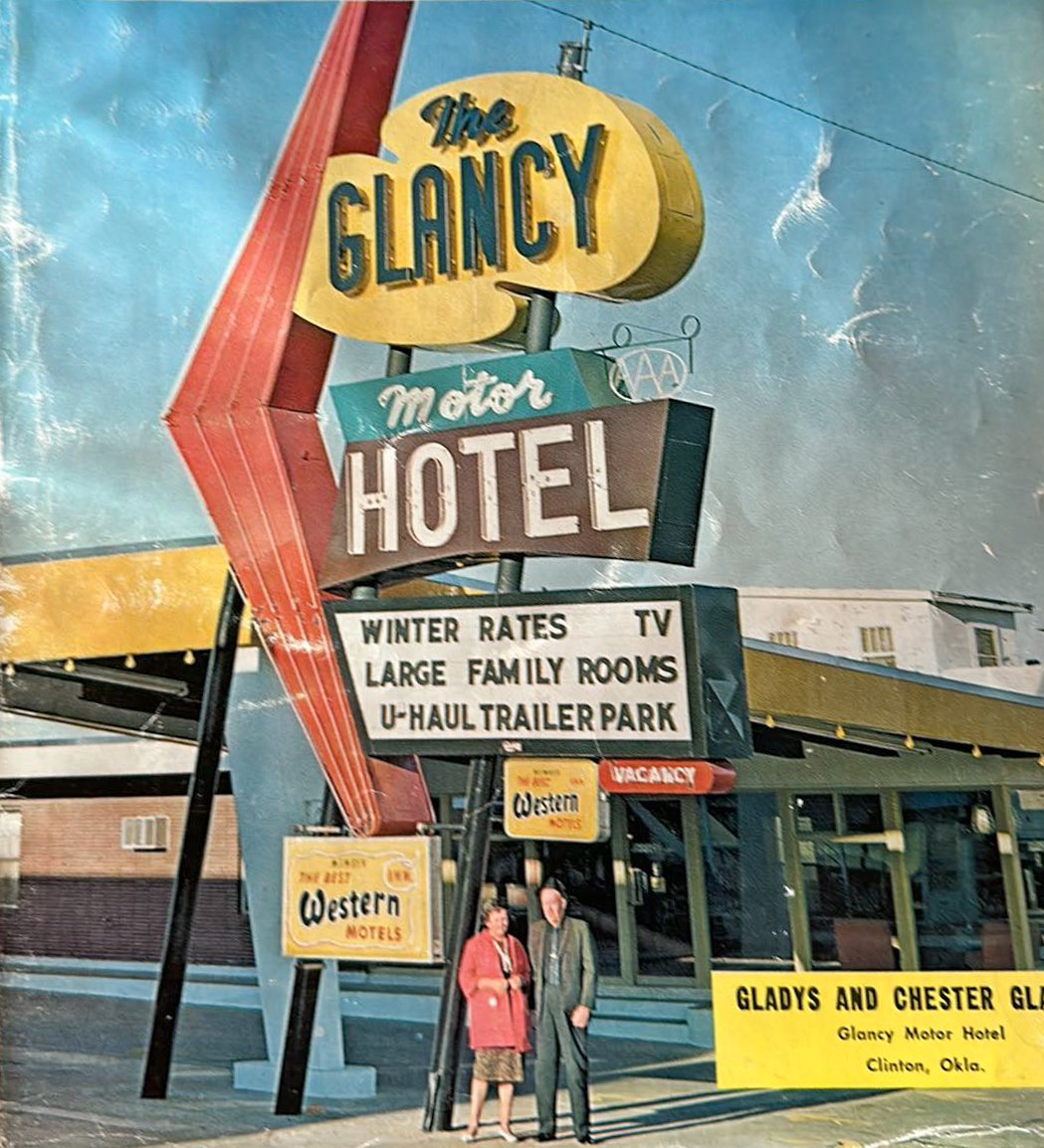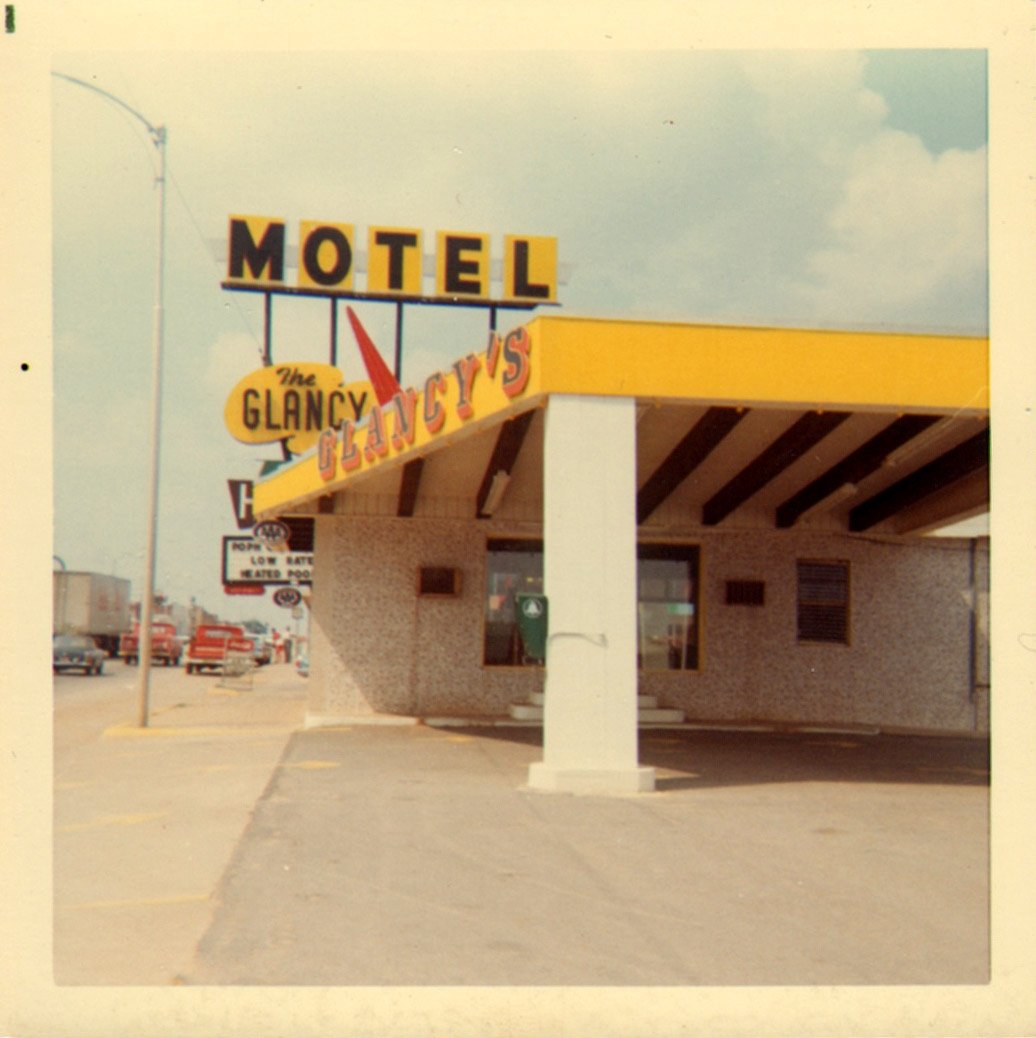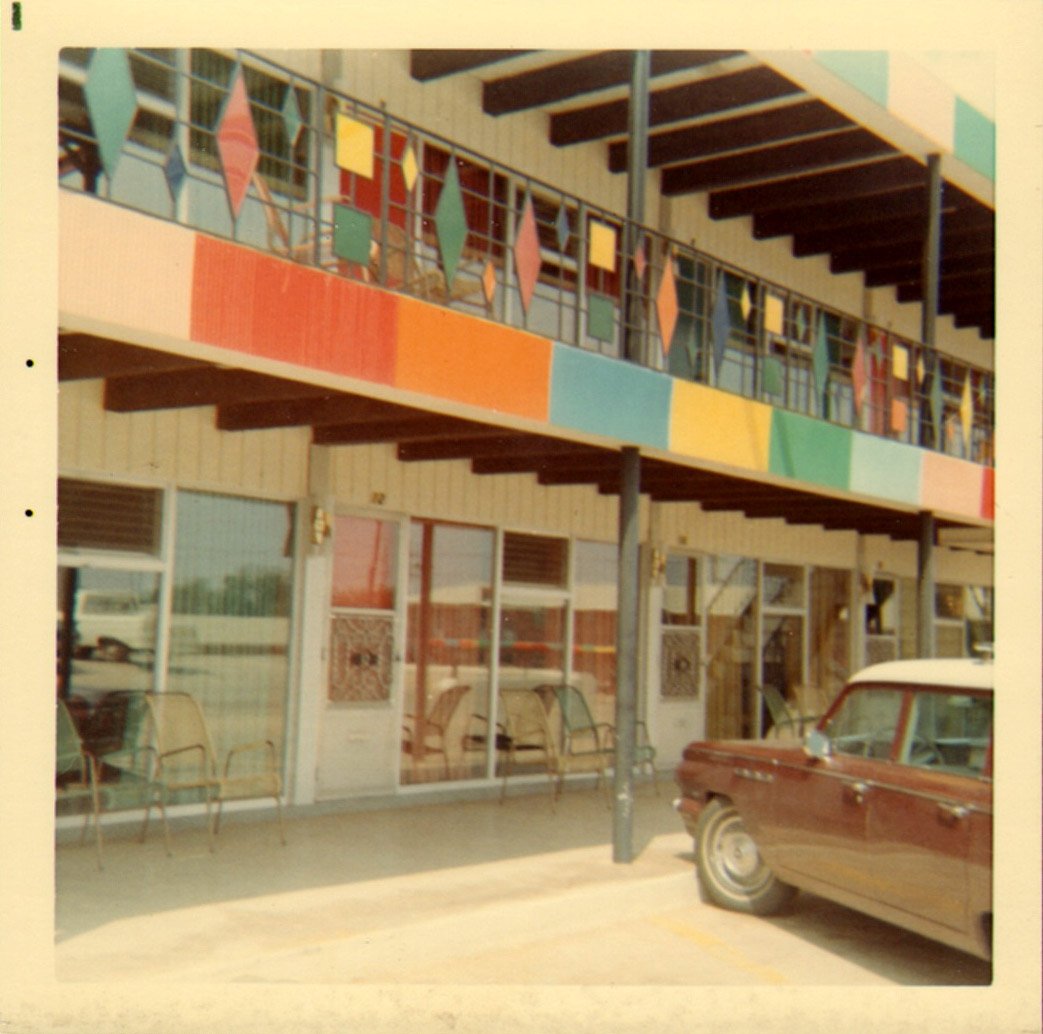The Glancy: Part One - Realized Dreams
by Rhys Martin
Postcard photo courtesy of Joe Sonderman
The Glancy Motor Hotel in western Oklahoma is gone. The last few years have been a roller coaster of hope and disappointment; years of neglect capped by a sudden surge of interest that sparked hope in preservationists and the greater roadie community before sputtering out and ending in ultimate defeat. How did this happen, just a few years short of the Centennial when so many people seem to be interested in Route 66 as a tourism and economic development engine? It’s an unfortunate tale of timing, financial support, and local exhaustion with a project that seemed to run into roadblock after roadblock. It’s a story not unlike that of Clinton’s other historic property that met with a similar fate in 2000, the Calmez Hotel. But the story starts, as many Route 66 stories do, with local entrepreneurs that saw a need and filled it.
Chester Glancy standing with his son Chester Jr. in front of a home-grown palm tree, circa 1936
Chester and Gladys Glancy moved to Clinton, Oklahoma from nearby Foss in 1926…the same year that US Highway 66 received its number. They operated a grocery store, first at the Clinton Y and then downtown. “He got up every morning at 3 am and drove to Oklahoma City to pick up fruit,” said granddaughter Kimberly Glancy Johnson. The story goes that the Glancys started seeing so many travelers on Highway 66 that they realized there was untapped potential in catering to their needs, so they pivoted. Cheser and Gladys opened their first motel in 1939 and called it The Glancy Courts.
The Courts were the Glancy’s first motel in Clinton, which sat on the south side of Opal Ave between 4th and 10th Streets.
The Courts stood at 8th Street and Opal, which was known as the 66 short cut in those days. Chester built three guest units and stuccoed the walls himself. He used one unit as an office until the other two were rented and when the third unit had a customer, he went to bed. The rooms were just $2 a day. It was a successful endeavor, growing to 28 rooms and enabling the Glancys to “retire” debt-free after only a decade, leaving the day-to-day operation to a manager. That retirement didn’t last long, though.
“Retirement’s not what you think it is,” Chester said at the time. “Everybody we knew had to work. If I wanted to go hunting or fishing, the other guys couldn’t get off. I went to Lions Club, then came home to loaf and the others went back to their office or stores.” Gladys noted that if that had gone on for much longer, they would have gone crazy. So, after just a few months, they broke ground on the motel that would carry their name into the 21st century.
The office of the Glancy “Downtown” Motel shortly after construction. Photo courtesy of Kimberly Glancy Johnson.
We know it today as the Glancy Motor Hotel, but it was originally called the Glancy “Downtown” Motel. “It’ll be just as modern as tomorrow,” Chester told the Clinton Daily News. The original single-story building featured 18 rooms in a U-shape with a two-story office on the southwest corner, which also housed a curio shop and management living quarters. Green space in the middle featured a well-manicured lawn and flower beds. There was even a storm shelter, which some locals quipped could double as a nuclear fallout bunker.
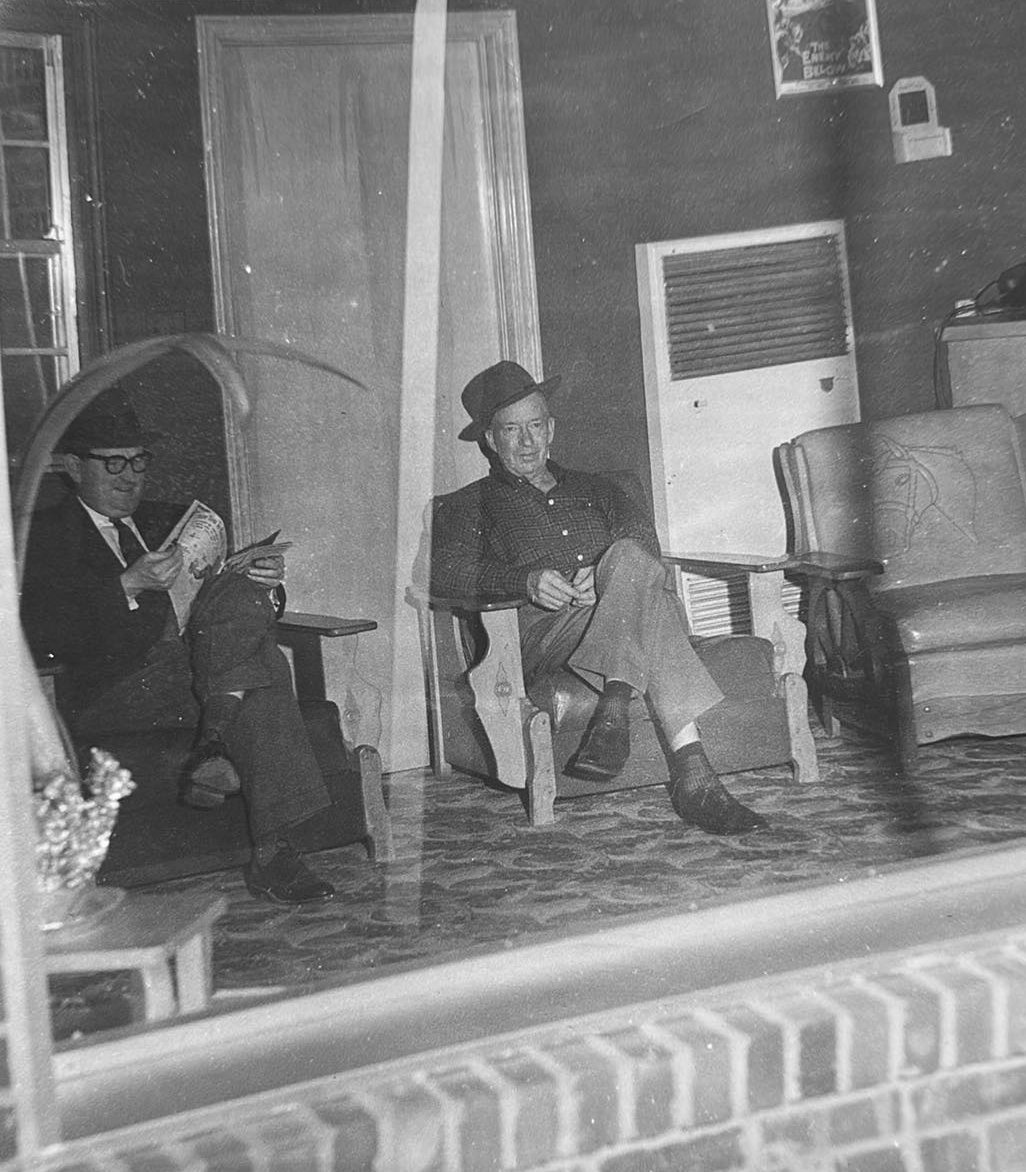
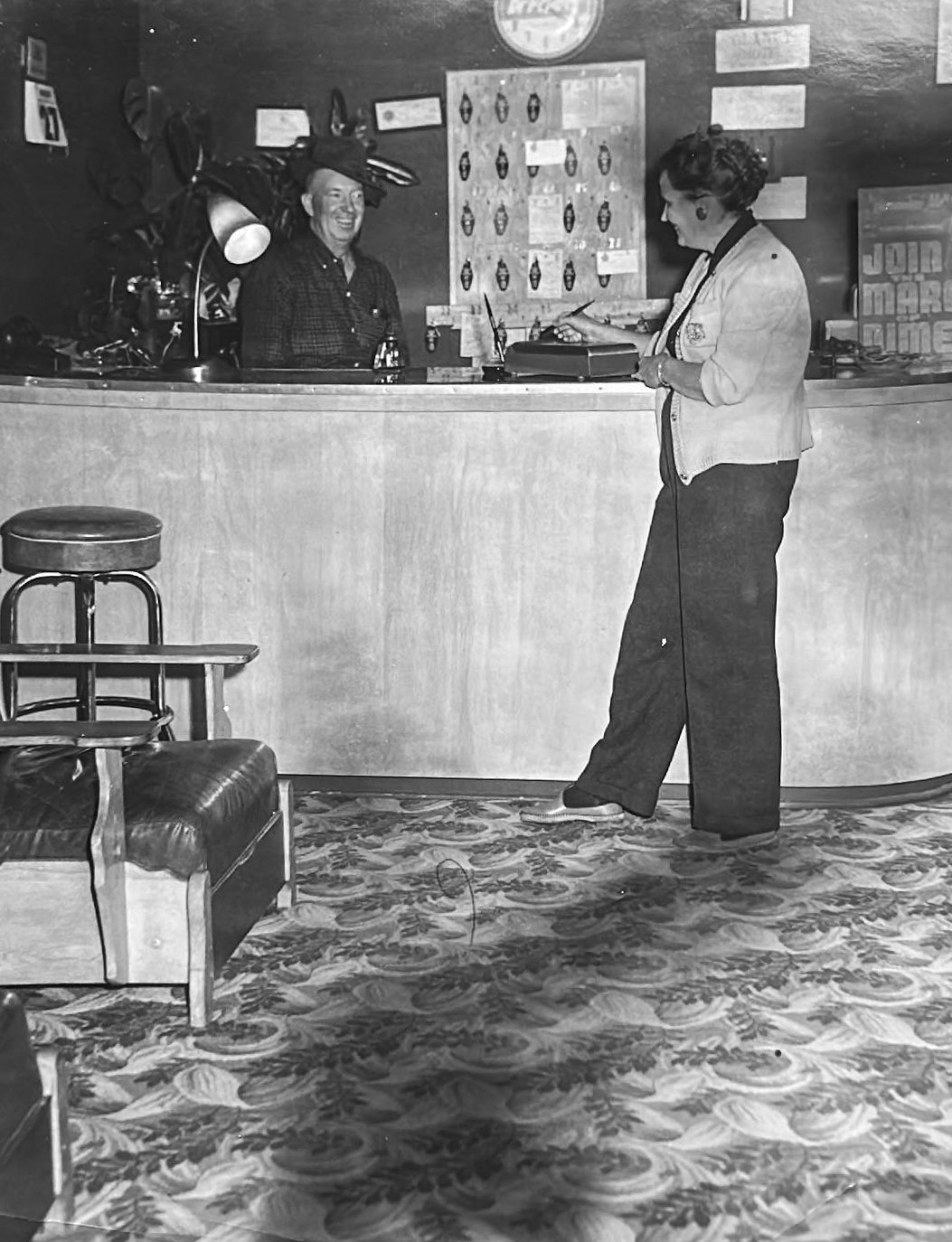
A simple, L-shaped neon sign beckoned to travelers on Highway 66. The new motel was strategically built next door to Pop Hicks’ Restaurant, which had been satisfying the appetites of western Oklahoma travelers for over a decade already. The new motel opened on July 9th, 1950.
Chester and Gladys Glancy at their new switchboard, which routed calls from every room and provided 24-hour service. Photo courtesy of Kimberly Glancy Johnson.
The Glancys kept their original Courts for a few more years, renovating and expanding the property in 1953 before selling the property a few years later. The new owners renamed it the Western Motel, not to be confused with the Glancy’s Western Motel in Elk City, which they purchased in 1955 and expanded in 1957. Two short years later, though, they sold the Elk City concern to Mr. and Mrs. Fred Baxter. The “Downtown” Motel in Clinton was the future.
Newspaper spread from January 1953 announcing the renovations at the original Glancy Courts
In 1959, the same year the Glancys offloaded the Western in Elk City, the Downtown Motel expanded. Twenty-five rooms were added to the original 18 along with a fan-shaped swimming pool. The Clinton Daily News reported, “All of the new rooms have wall-to-wall carpeting, television, attractive ceramic tile bath and dressing rooms, individual air-conditioning units, and new automatic electric room heating units.” A few of the original rooms were torn down to open up the alleyway separating the new rooms from the original lot.
Chester and Gladys Glancy
Open House advertisement from the Clinton Daily News - March 1, 1959
The motel expanded again in late 1962. The remainder of the original units on the west side were razed and replaced with a modern two-story structure, bringing the total room count to 75. A new office building was also built with “theater-type carpeting” and a manager’s apartment in the back. A larger, modern pool was installed and a giant neon sign was built. The expansive complex was given a new name, too: The Glancy Motor Hotel.
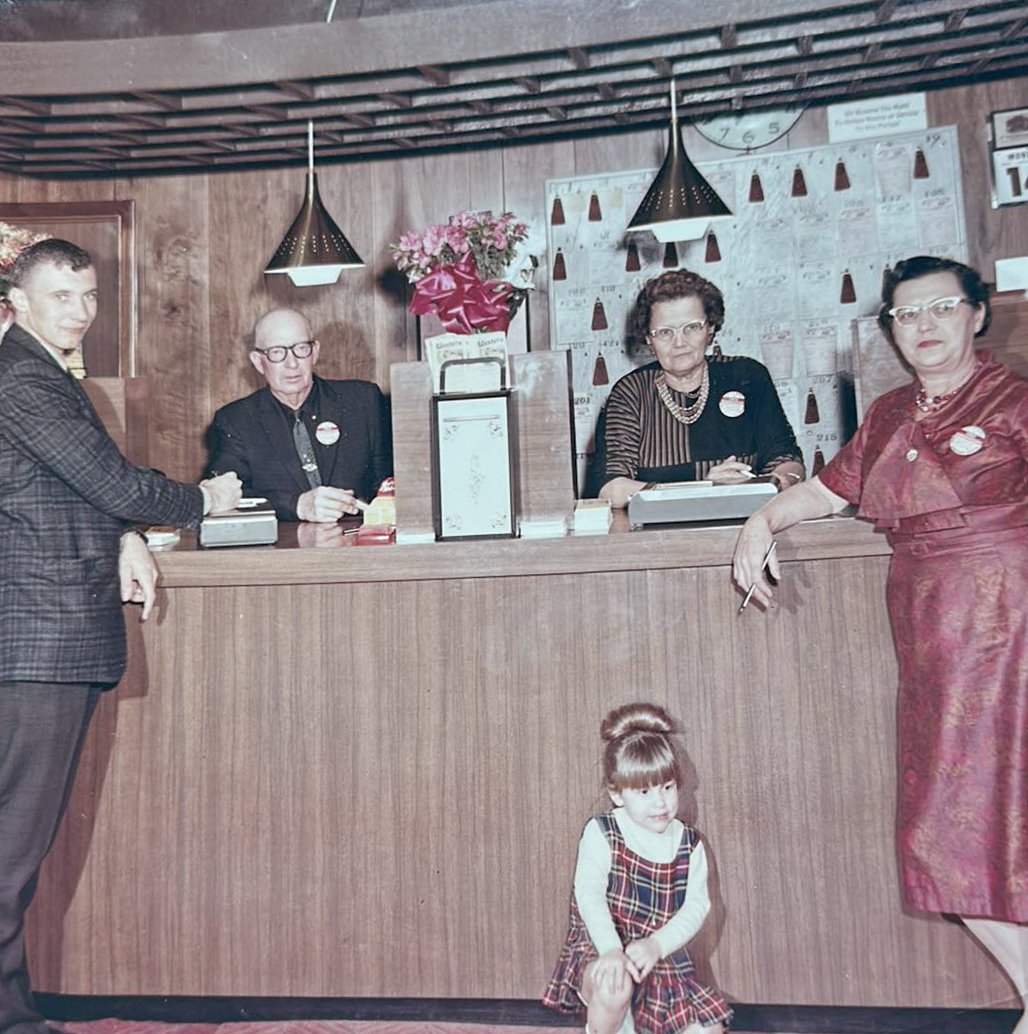
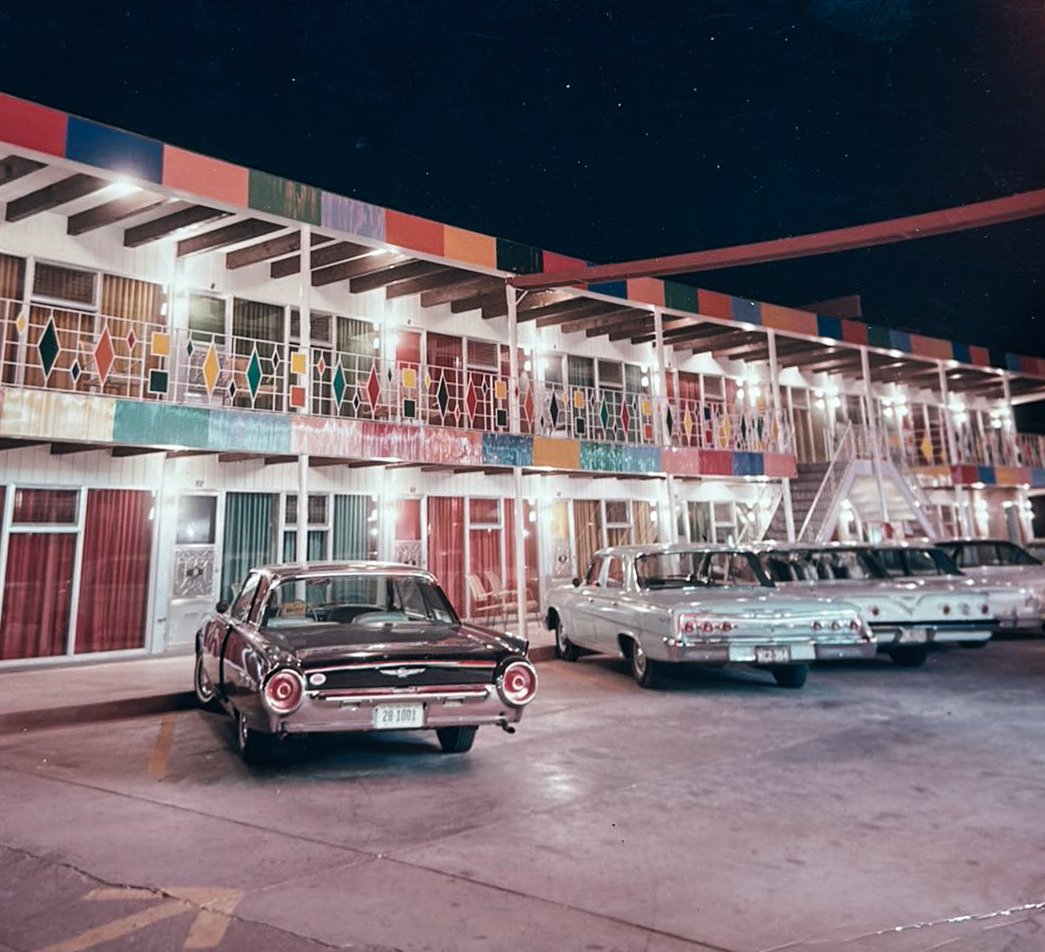
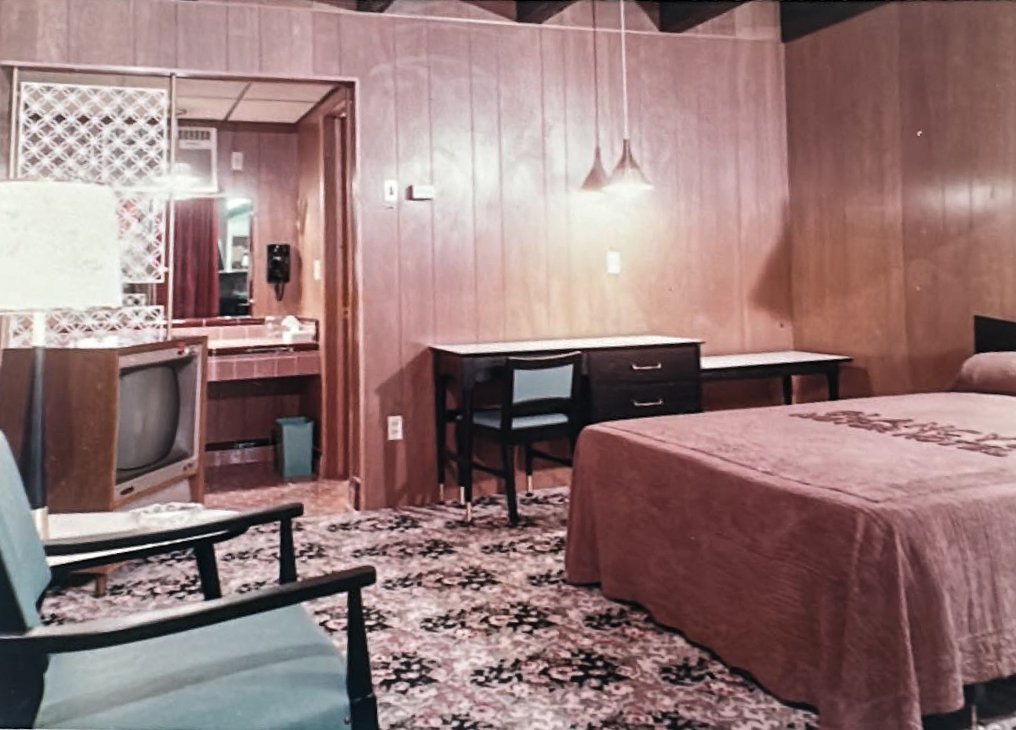
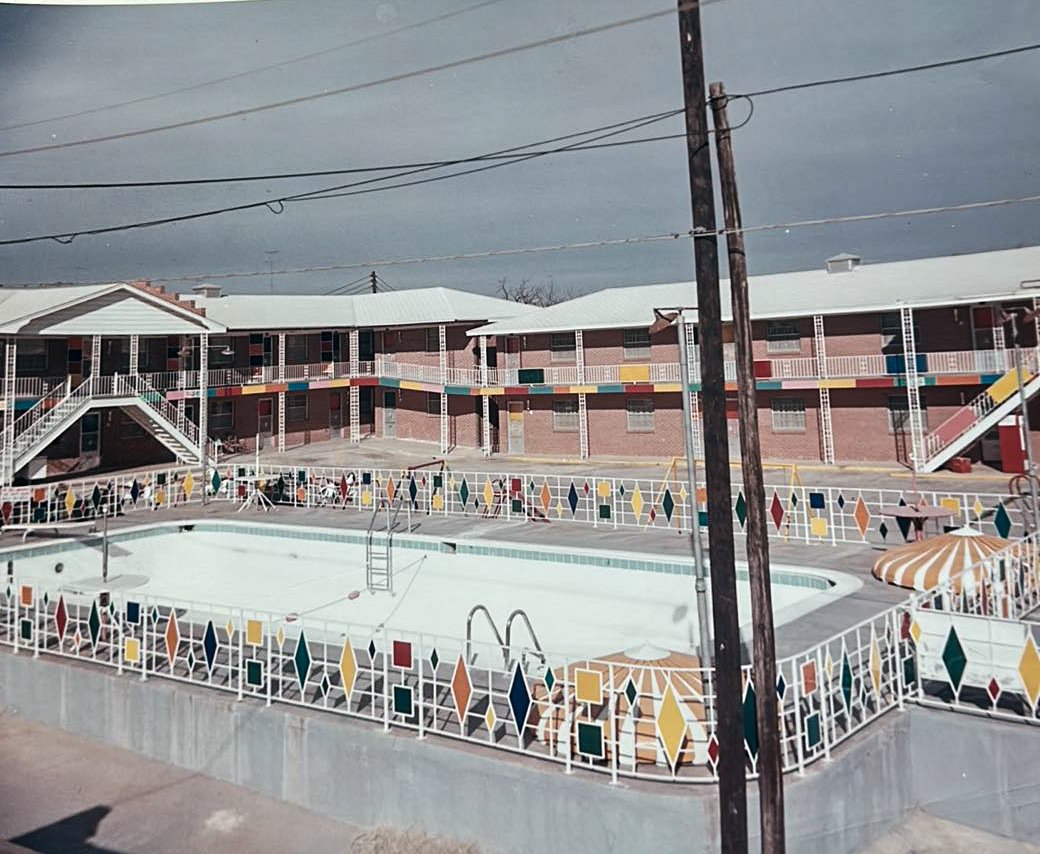
The new rooms included “tailor-made Franciscan furniture, mahogany wood paneled walls, individual room heating and air conditioning units, imported tile from Spain and timbers from Oregon.” Gladys Glancy designed the furniture herself, all of it inspired by trips to the East Coast. “We feel the rooms are far superior to anything we’ve ever been in,” Chester said at the time. “We’ve traveled to many places including New York City and Philadelphia for new ideas. We took pictures of many motel rooms we liked, put the best ideas together, and came up with our rooms.”
Image courtesy of Joe Sonderman
The Glancy’s success was not limited to the growth of their motels in Clinton and Elk City. Chester was President of the Oklahoma Motel Association for a time and a governor of the Best Western organization. The Glancys appeared multiple times on the cover of Tourist Court Journal, a major trade publication that focused on “Mom and Pop” motels across the country. They spoke at national motel conferences and partnered in other projects. “They were truly a team,” remembered their granddaughter Kimberly Glancy Johnson. “They worked together and made it profitable. They also built the Tropicana Inn in Weatherford and were investors in a hotel in Las Vegas.” Chester also served as the President of the US Highway 66 Association for several years.
Photo courtesy of Kimberly Glancy Johnson
Things were going well, but if you’re familiar with the history of Route 66 you know what’s coming. Just weeks after the latest addition to the Glancy opened in 1962, construction was announced along the new I-40 corridor on the south side of Clinton. The carving of the land for the interstate heralded the coming of Route 66’s decline. The Glancys held on to their crown jewel until some time in the 1970s. After that, everything changed.
